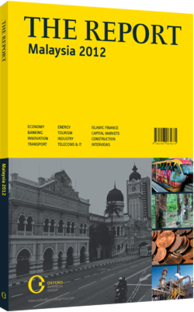Cruel to be kind: Though unpopular, there is a pressing need to cut subsidies
To hit its target of becoming a high-income nation by 2020, Malaysia will need to reduce subsidy programmes, which are set to increase in cost by 27% in 2012, beyond forecast levels. However, the country has one of the highest income disparities in South-east Asia, and subsidies are critical in assisting vulnerable groups.
CUTTING DOWN: The fate of subsidies on everyday items like sugar, cooking oil and fuel largely depends on whether politicians are more worried about the high cost of living or the rising public debt. In January 2012, for example, the government raised the sugar subsidy from $0.06 to $0.17 per kg. This was ostensibly a reaction to higher prices for imported sugar, although many saw the subsidies as a signal of impending elections. The increase has been partially reversed in the government’s 2013 budget, falling to $0.11 per kg.
Fuel subsidies have proved trickier to cut: the 2013 budget continues price controls for the widely used RON95 variety of petrol, which currently receives subsidies worth 22% of the market price. In July 2012, facing rising oil prices worldwide, the government increased subsidies to maintain RON95 at the current price of RM1.90 ($0.60) per litre. Malaysia — which has the second-cheapest petroleum in Asia — spent around $6.5bn on fuel subsidies in 2011. Cheap gas from Petronas for the power sector accounted for $3.7bn of this, but the national oil and gas firm has repeatedly declared that the subsidies it is providing are unsustainable.
FISCAL BURDEN: The share of subsidies in the budget has been rising for a decade, from 1.3% in 2010 to 14.3% in 2011. This is expected to expand further in 2012, with a $13.7bn subsidy bill that will amount to 16.7% of federal expenditure. Subsidies are one factor driving a forecast 4% budget deficit-to-GDP ratio for 2012, one of the highest in the region and a key issue in the upcoming elections. But the debate cleaves across Malaysia’s sharp political divisions: both the ruling and the opposition party agree that subsidies need to be rolled back, though they disagree with each other and internally about how and when to do so.
Moreover, there have been previous efforts to rein in subsidy spending. In July 2010 the administration removed subsidies on RON97 fuel, and raised the price of RON95, liquefied petroleum gas, diesel and sugar.
These cutbacks have largely held, but inflation and rising global commodity prices forced the government to reduce the pace of its rationalisation plan. The state added a National Key Result Area focused on slowing cost of living increases to the Government Transformation Programme, and promised to delay further cuts.
A HELPING HAND: Much of the debate over subsidies is about how progressive they are, with many arguing that blanket subsidies on goods like fuel are disproportionately consumed by the rich. A note from non-profit institute Research for Social Advancement argued that for the expected $13.7bn cost of the subsidy bill in 2012, the government could instead give the bottom third of Malaysian households $532 per month, which would more than double their current income.
The proposed budget for 2013 includes several such programmes that directly target lower-income households. These include a 1% income tax reduction for low-income families, cash benefits of $160 to households with a combined income of $970 or less, and $80 to singles over the age of 21 earning $645 or less. Other handouts, like a bonus for civil servants, a voucher for schoolbooks or discounts on education, would also target benefits to those in need.
Streamlining expenses through reform and taxation can also offset the costs of subsidies and improve economic stability. The ruling Barisan Nasional party is again pushing the goods and services tax, which should help raise additional revenue by widening the tax base, and reduce dependency on revenue from petroleum and Customs duties. Basic logic, however, dictates that any potentially unpopular reforms will be delayed until after the upcoming elections. The winning party will then be faced with the dilemma of high subsidy expenses and a large population of low-income households that continues to require government assistance.
You have reached the limit of premium articles you can view for free.
Choose from the options below to purchase print or digital editions of our Reports. You can also purchase a website subscription giving you unlimited access to all of our Reports online for 12 months.
If you have already purchased this Report or have a website subscription, please login to continue.

